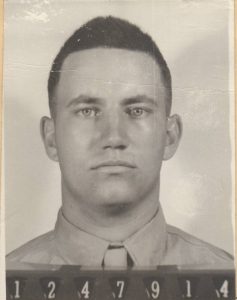Belfe, Bernard
Marines Private 1st class
Bernard Belfe, age 22, from Baltimore, Maryland, Baltimore county.
Service era: Korea
Date of death: Thursday, March 26, 1953
 Death details: In late March 1953, elements of the 1st Marine Division manned a string of outposts along a 33-mile section of the main line of resistance on the Korean Peninsula, near the present-day Demilitarized Zone (DMZ). The 1st Marine Division’s 5th Marine Regiment was responsible for three of these outposts, named Carson, Reno, and Vegas, or collectively “the Nevada Cities Complex.” On March 26, Chinese Communist Forces attacked all three outposts. Although Carson managed to stave off the assault, Reno and Vegas, which were more lightly manned, eventually succumbed to the enemy. Over 1,000 Marines were killed, wounded, or went missing during the attack on the Nevada Cities Complex. Private First Class Bernard Joseph Belfe joined the U.S. Marine Corps from Maryland and was a member of H Company, 3rd Battalion, 5th Marine Regiment, 1st Marine Division. He went missing in action during his unit’s fighting at the Nevada Cities Complex on March 26, 1953. He was never reported to be a prisoner of war, and his remains were not identified among those returned to U.S. custody after the ceasefire. Today, Private First Class Belfe is memorialized on the Courts of the Missing at the National Memorial Cemetery of the Pacific.
Death details: In late March 1953, elements of the 1st Marine Division manned a string of outposts along a 33-mile section of the main line of resistance on the Korean Peninsula, near the present-day Demilitarized Zone (DMZ). The 1st Marine Division’s 5th Marine Regiment was responsible for three of these outposts, named Carson, Reno, and Vegas, or collectively “the Nevada Cities Complex.” On March 26, Chinese Communist Forces attacked all three outposts. Although Carson managed to stave off the assault, Reno and Vegas, which were more lightly manned, eventually succumbed to the enemy. Over 1,000 Marines were killed, wounded, or went missing during the attack on the Nevada Cities Complex. Private First Class Bernard Joseph Belfe joined the U.S. Marine Corps from Maryland and was a member of H Company, 3rd Battalion, 5th Marine Regiment, 1st Marine Division. He went missing in action during his unit’s fighting at the Nevada Cities Complex on March 26, 1953. He was never reported to be a prisoner of war, and his remains were not identified among those returned to U.S. custody after the ceasefire. Today, Private First Class Belfe is memorialized on the Courts of the Missing at the National Memorial Cemetery of the Pacific.
Source: National Archives, Defense POW/MIA Accounting Agency